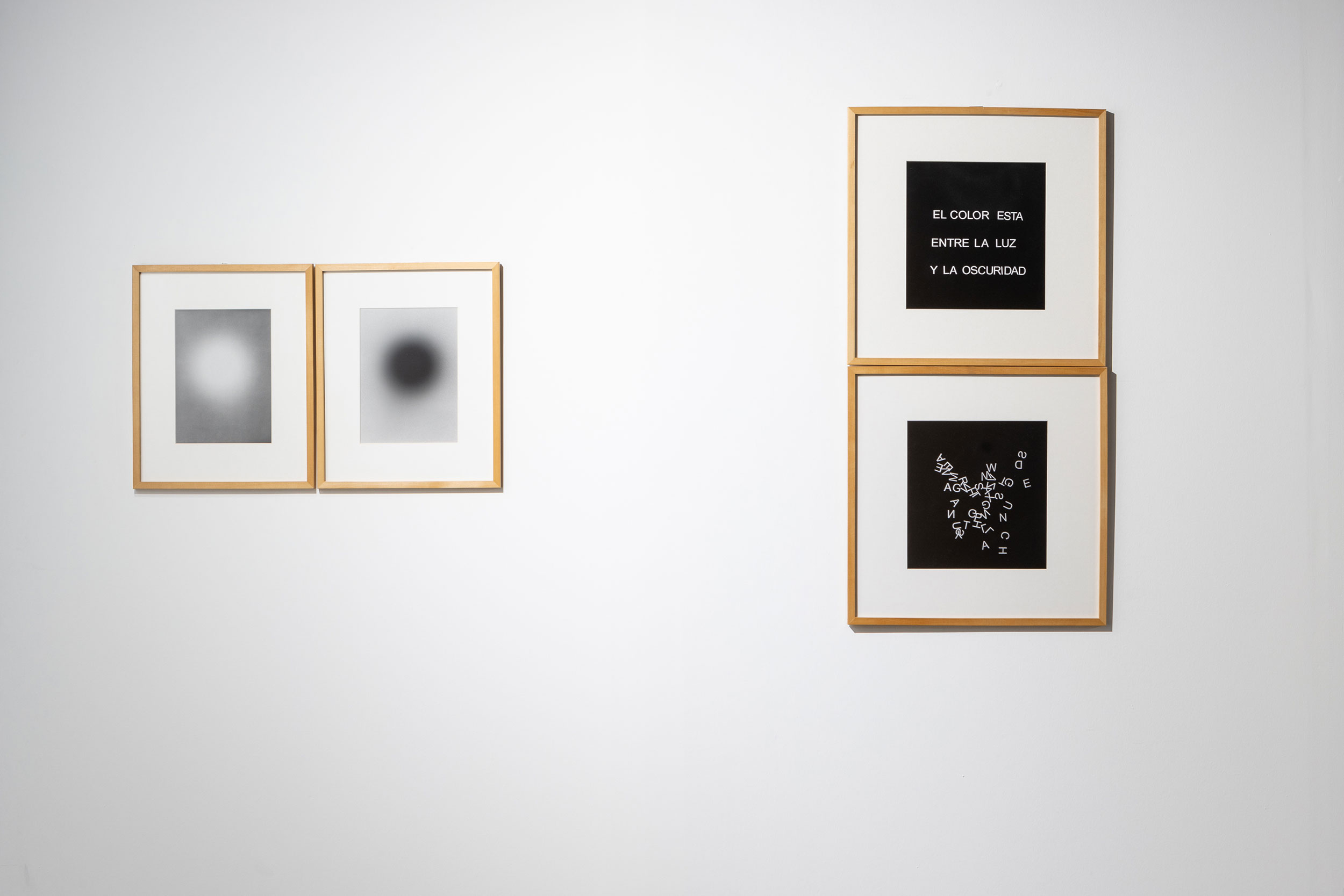
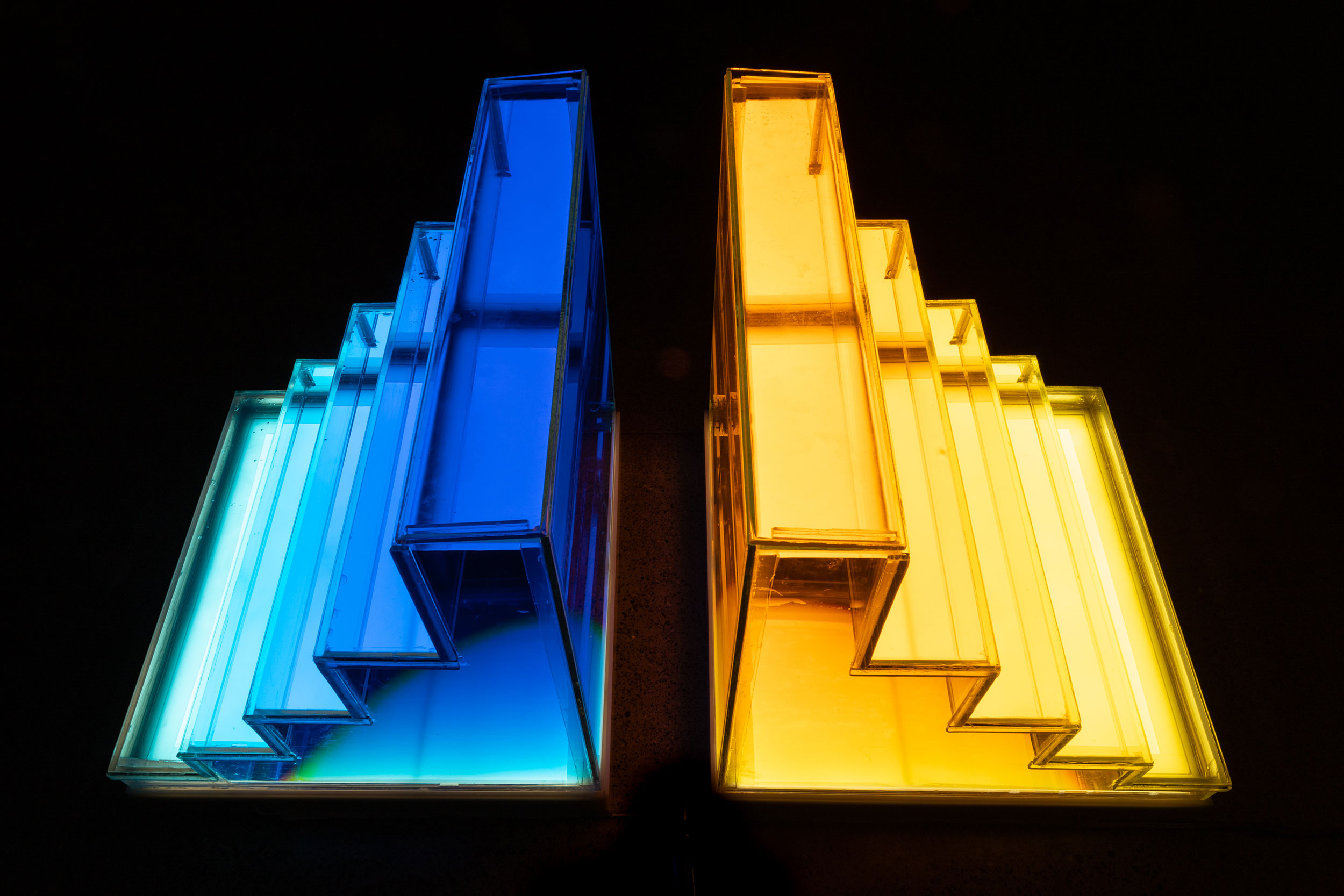
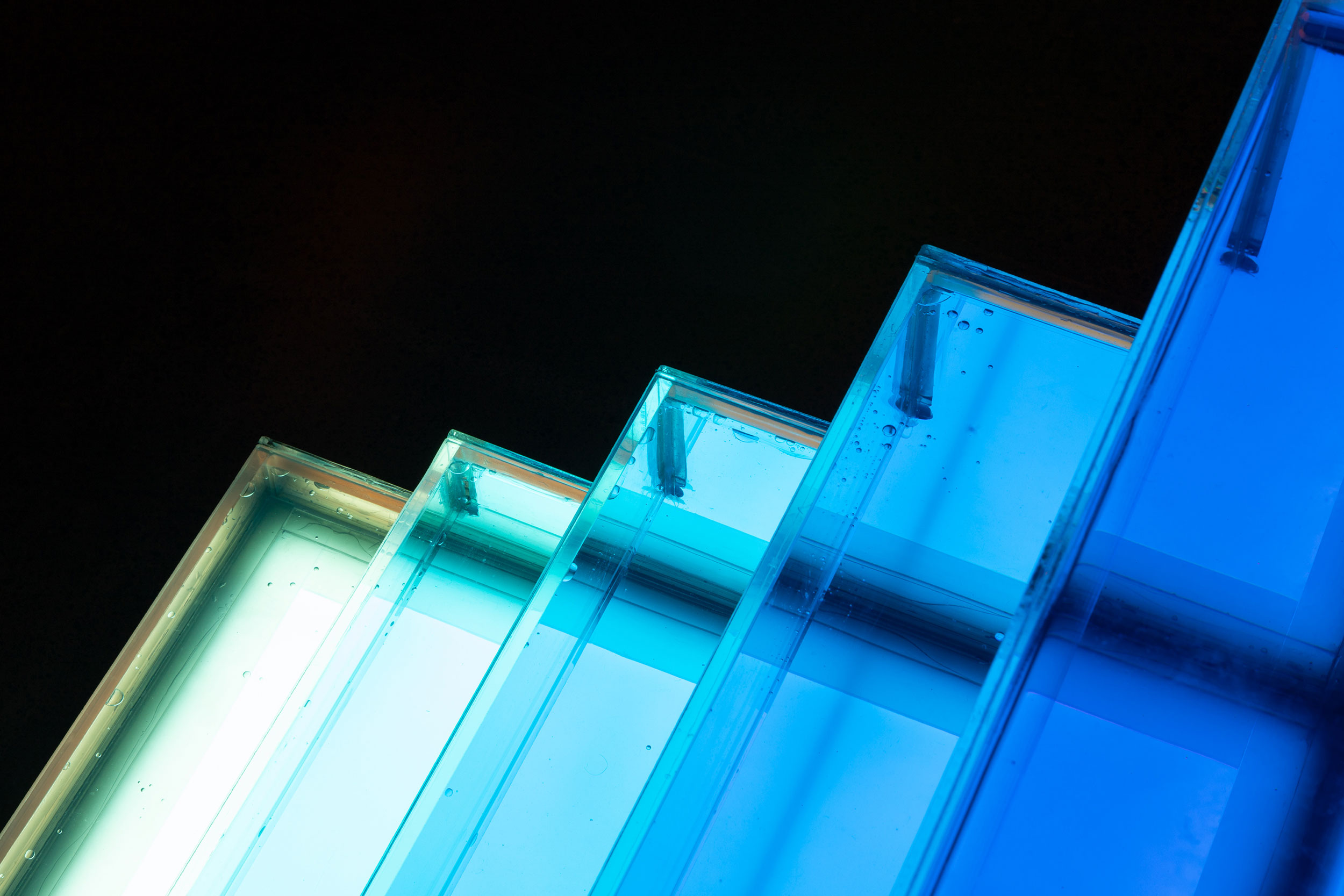
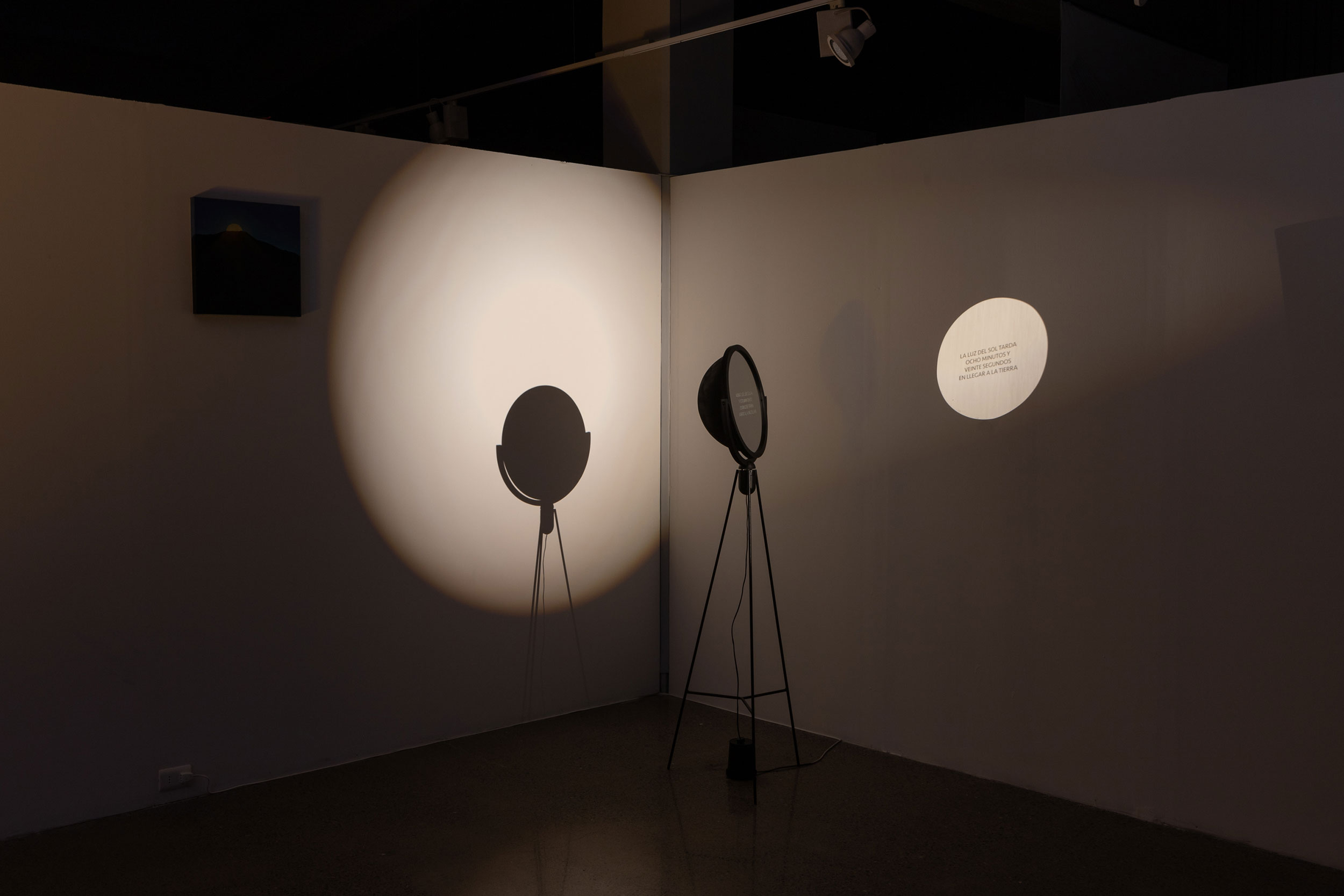
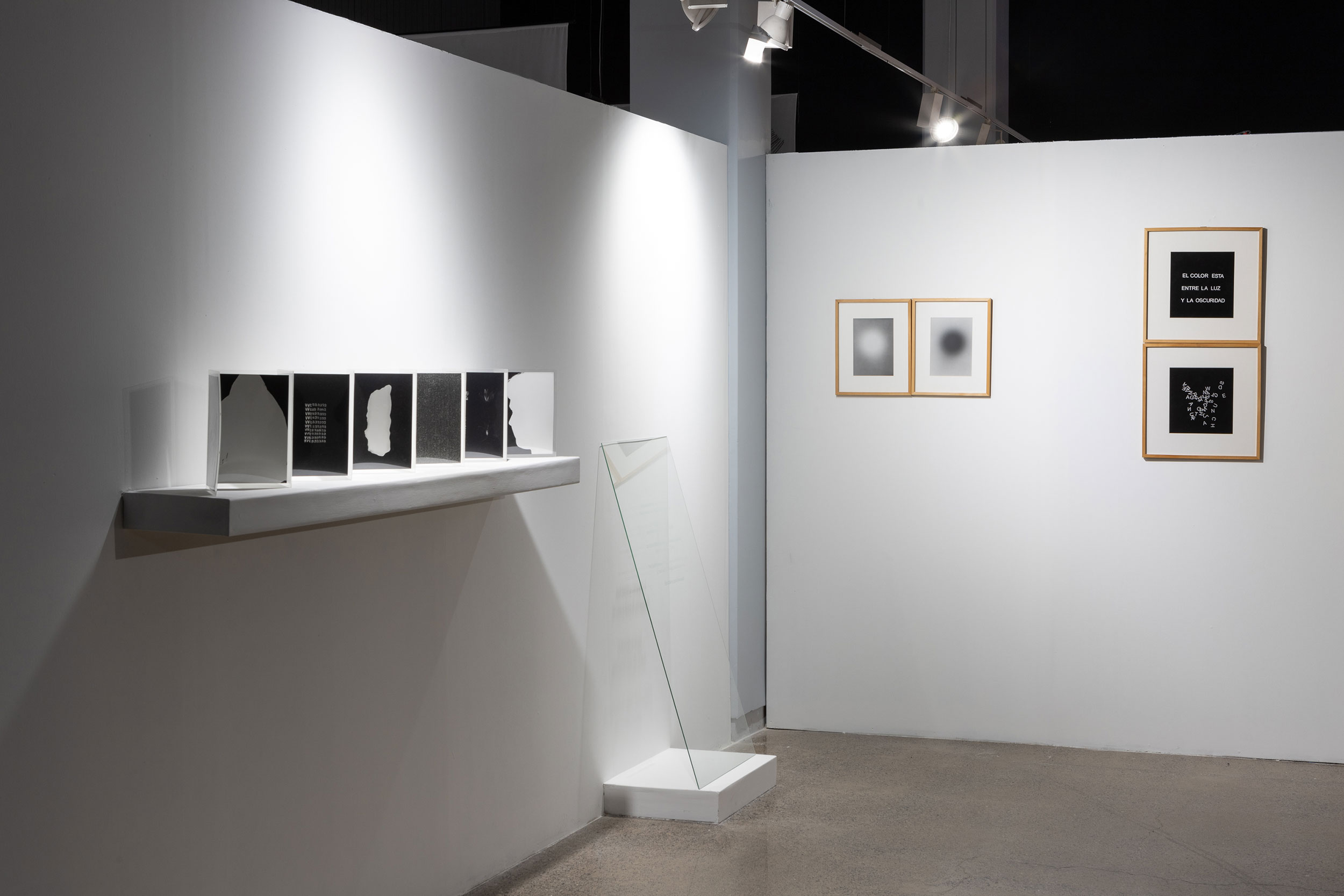








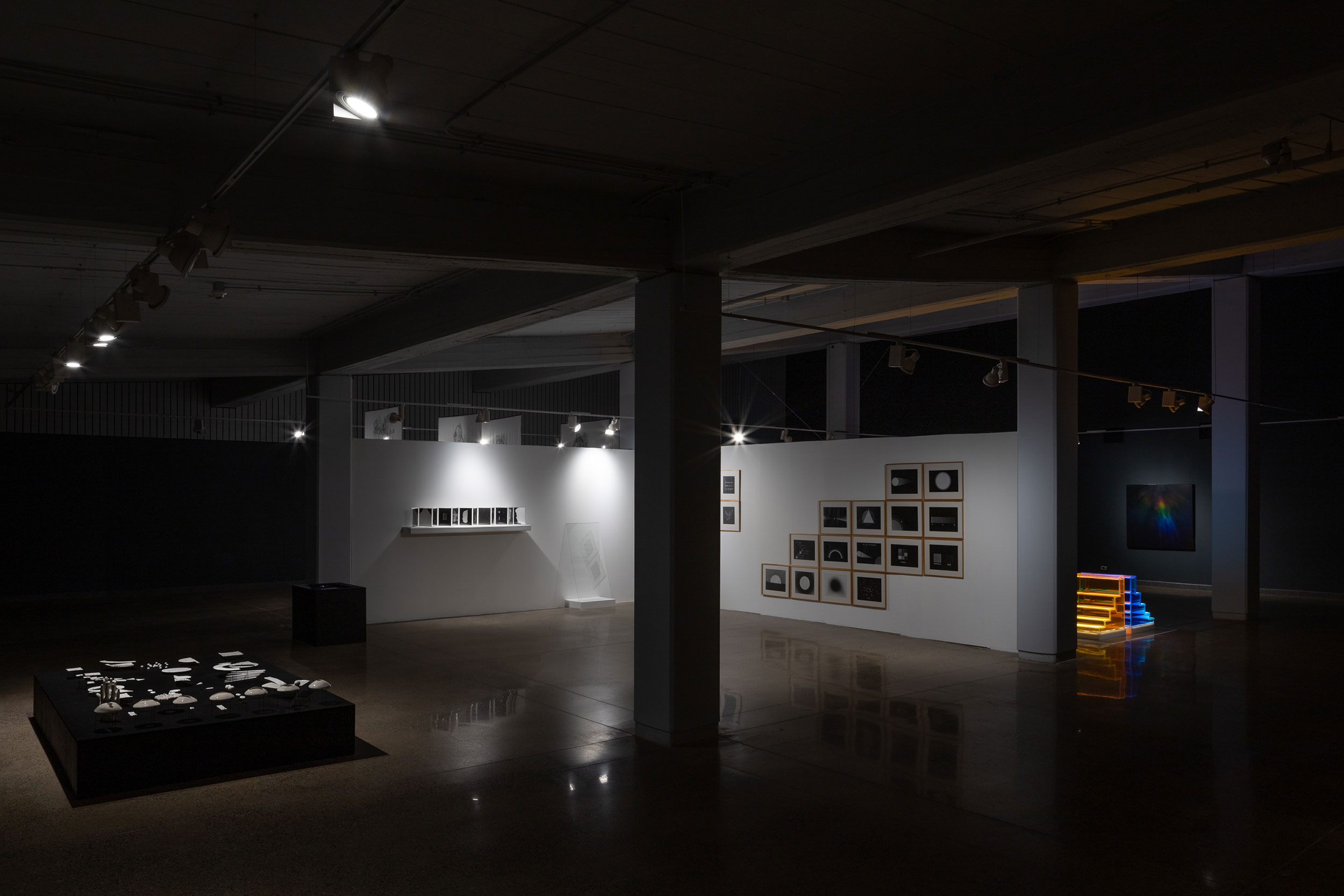
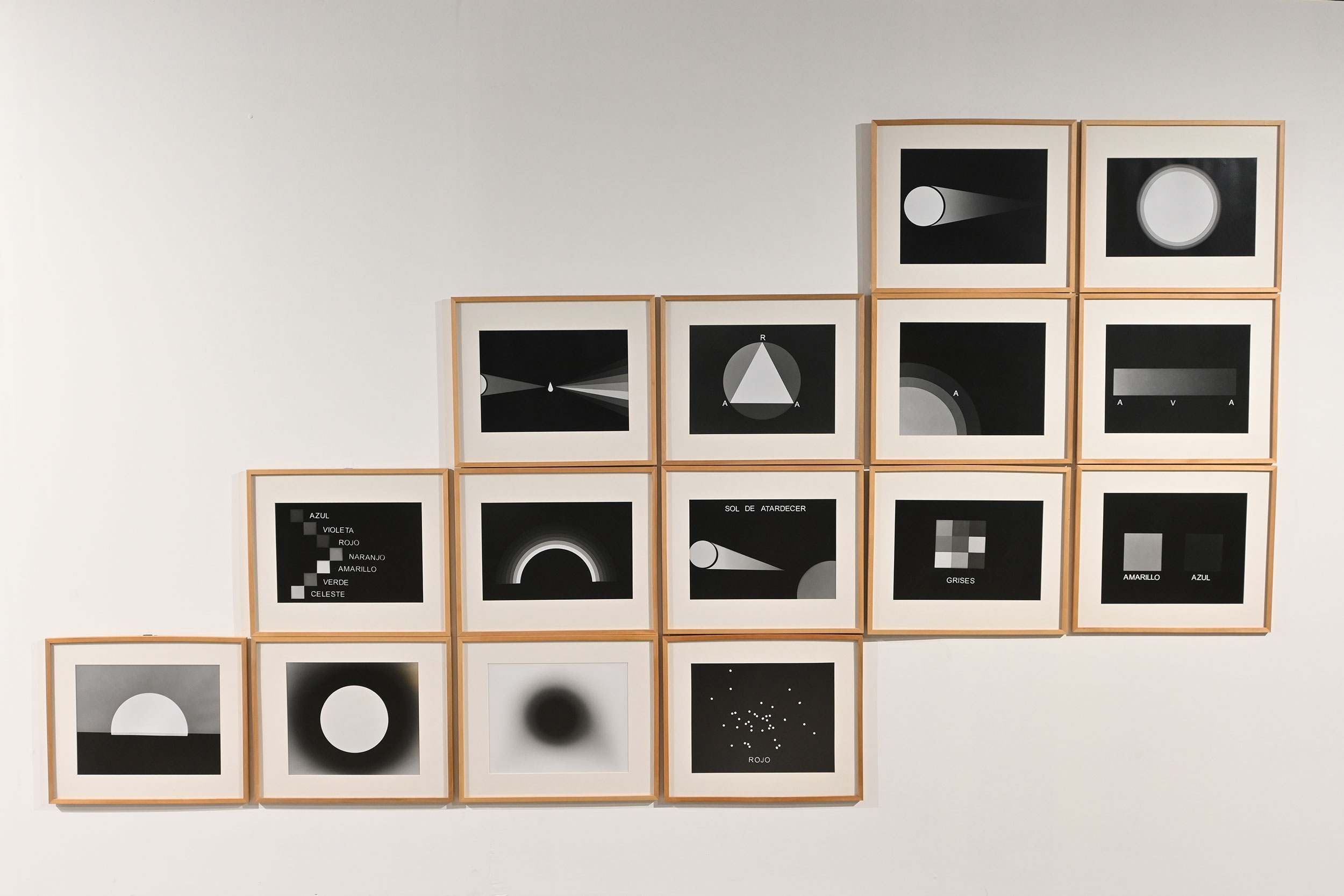

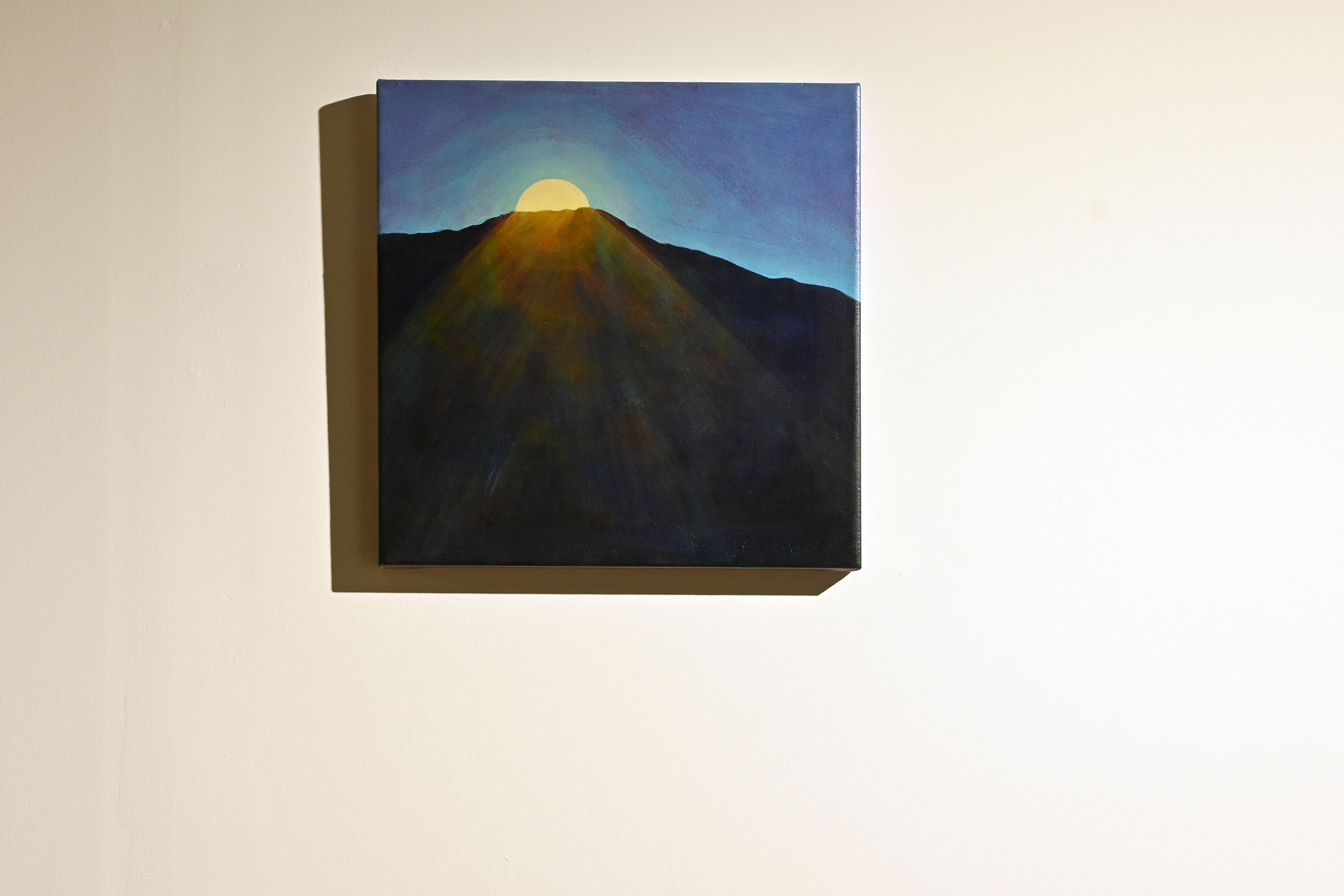
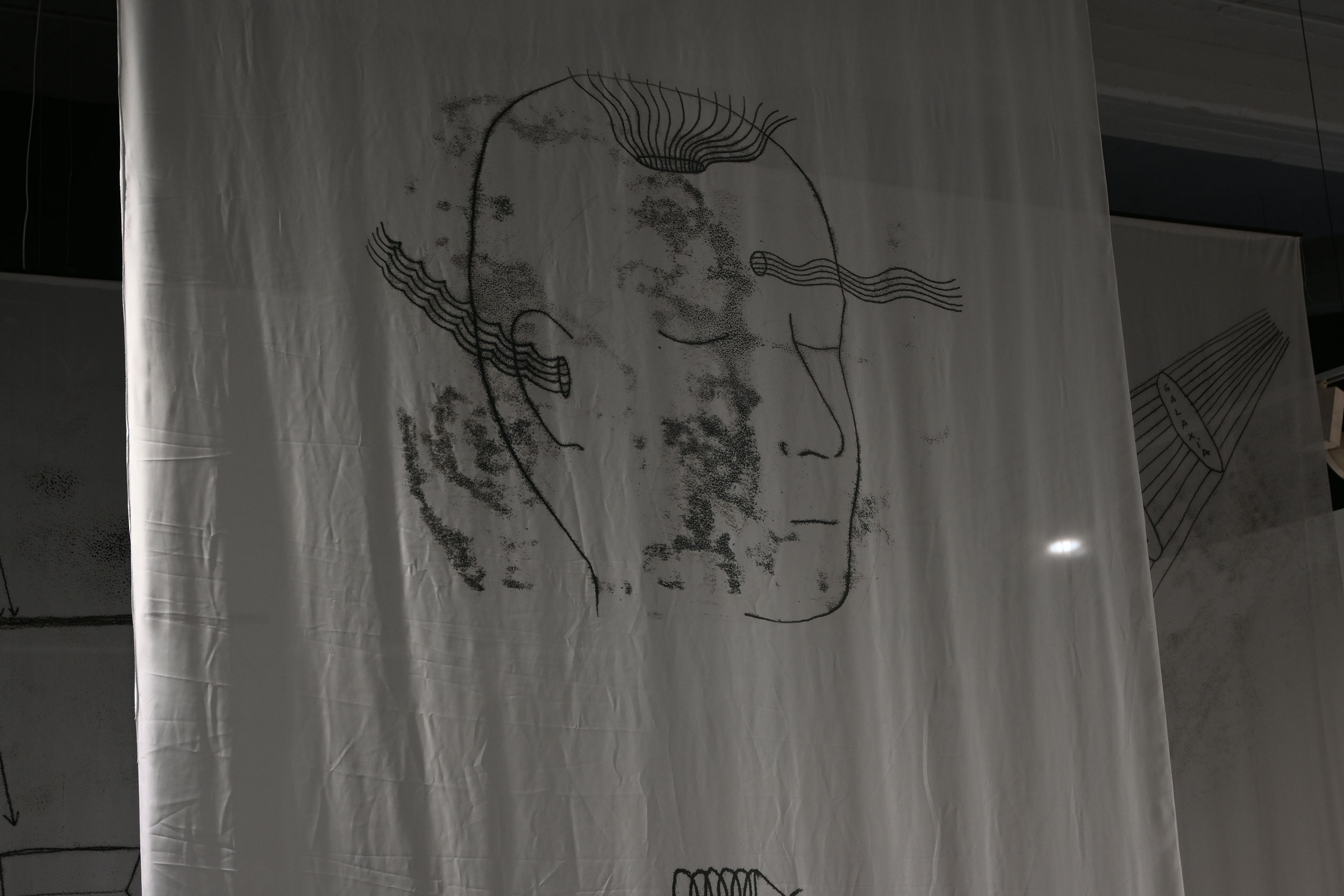
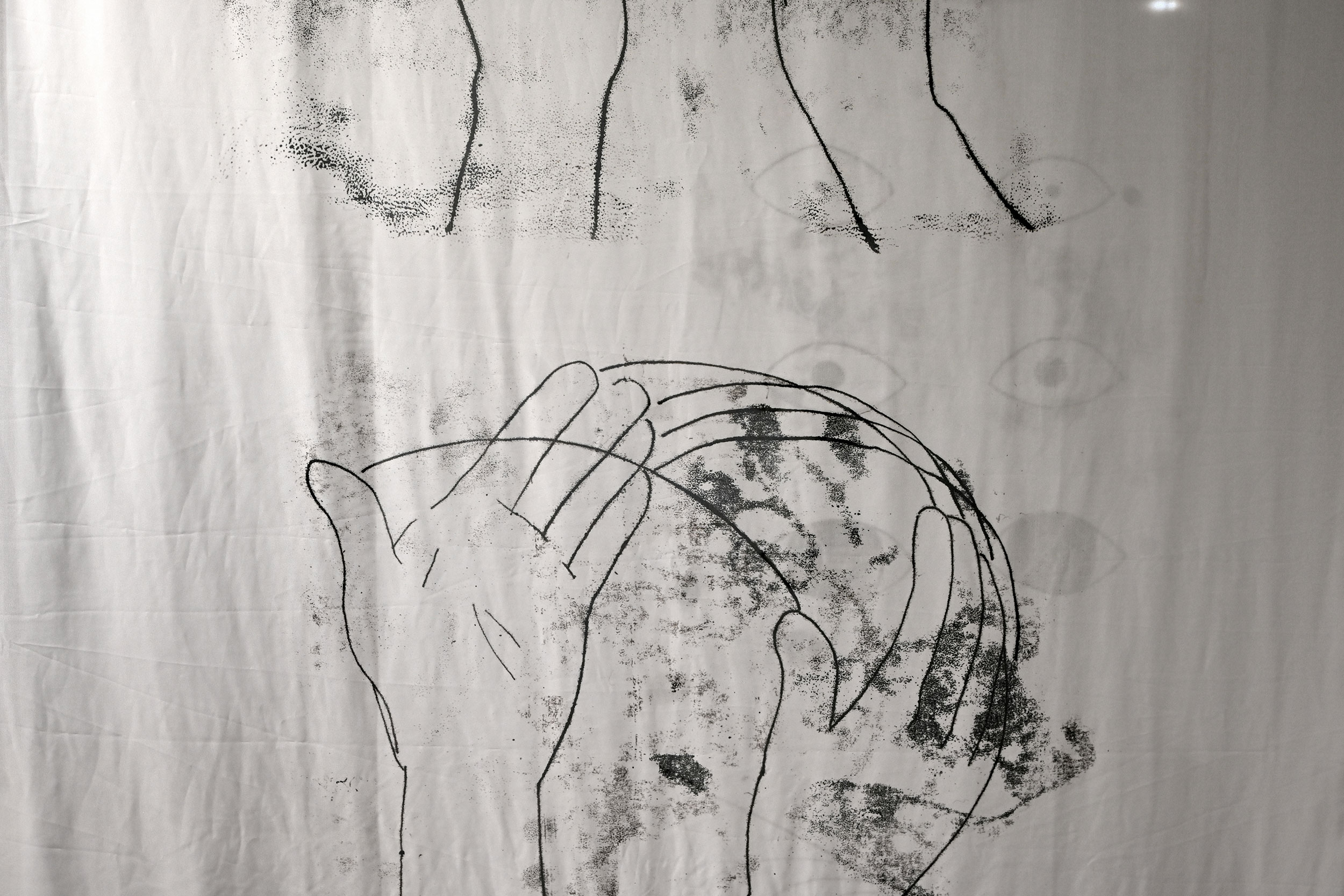
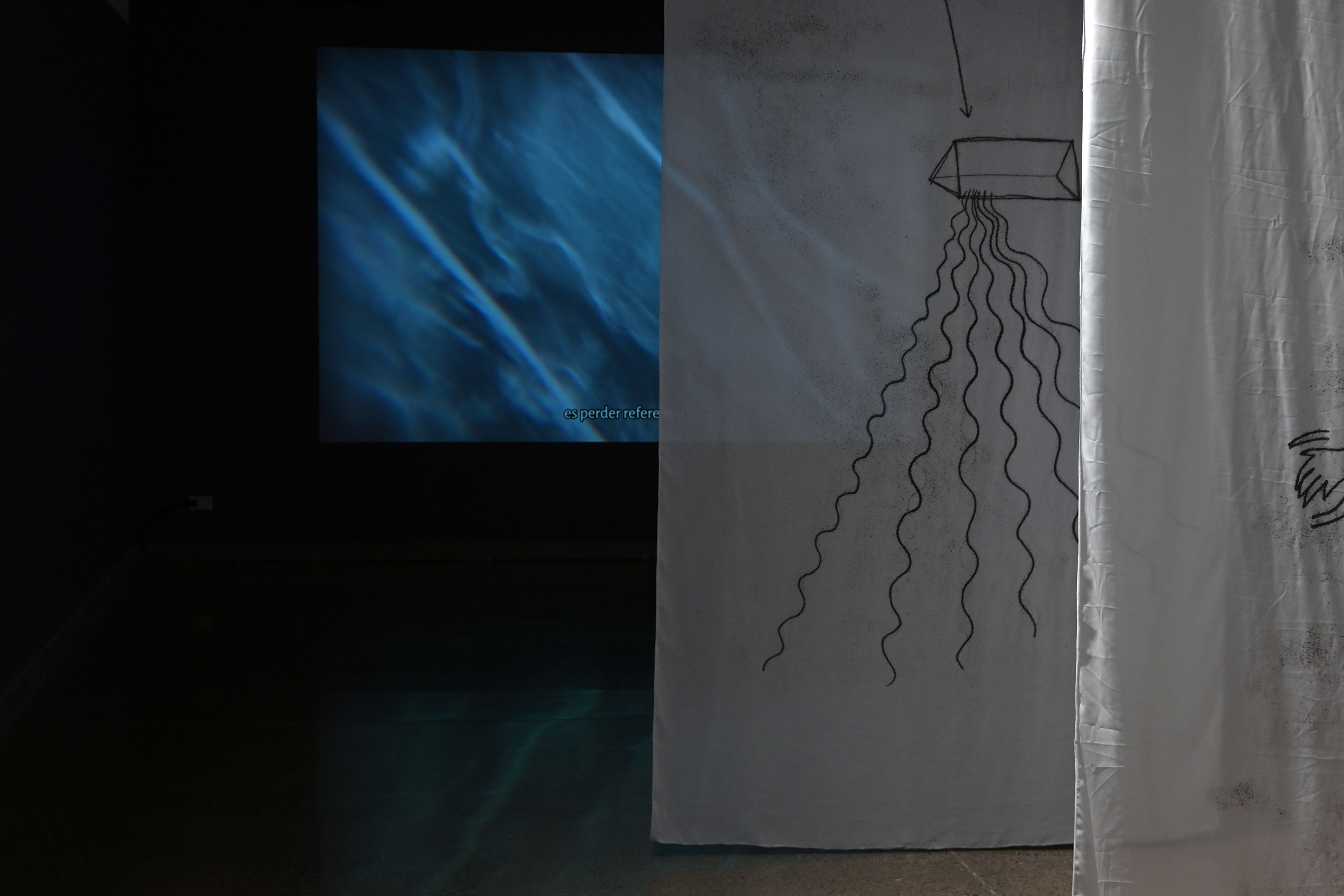
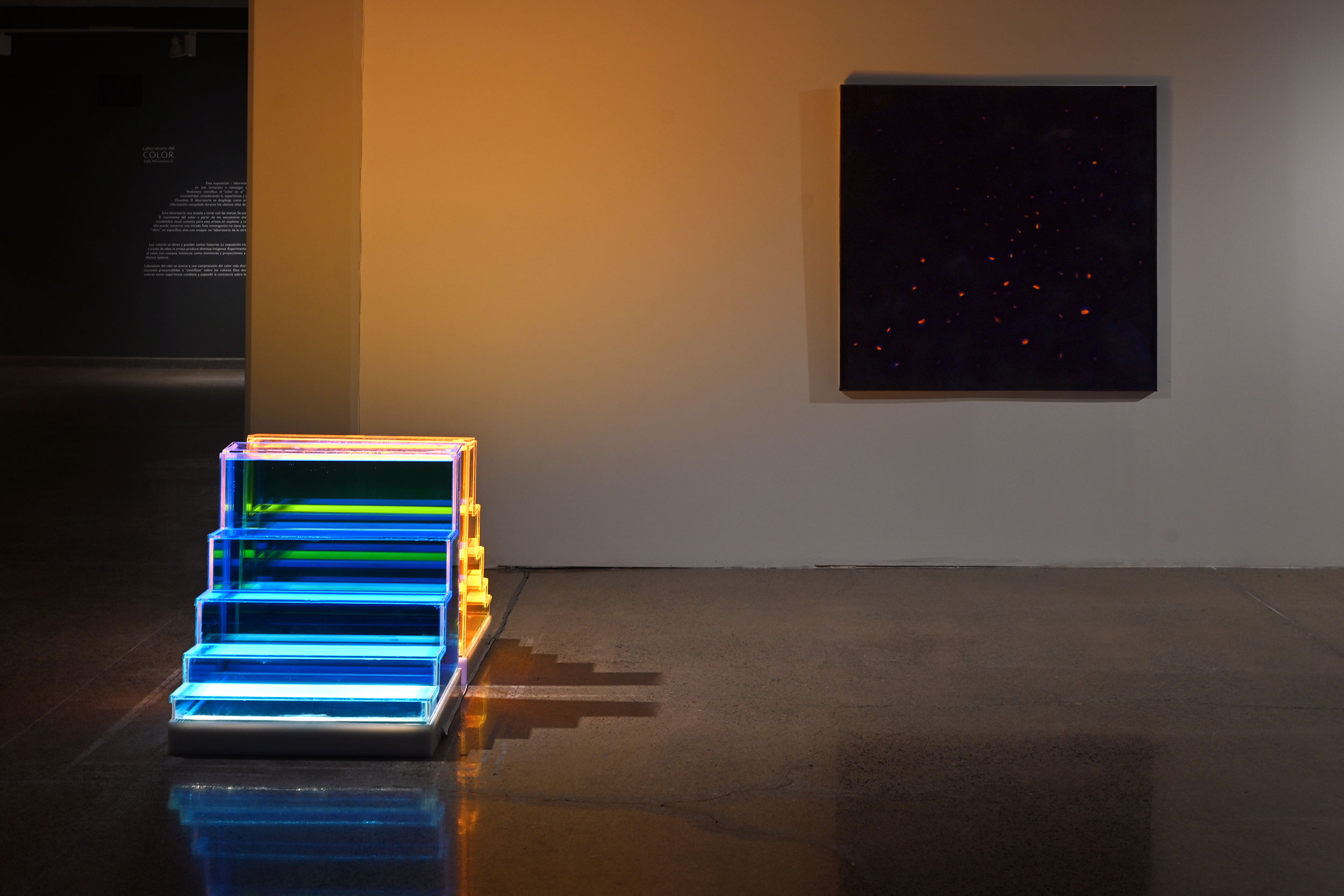

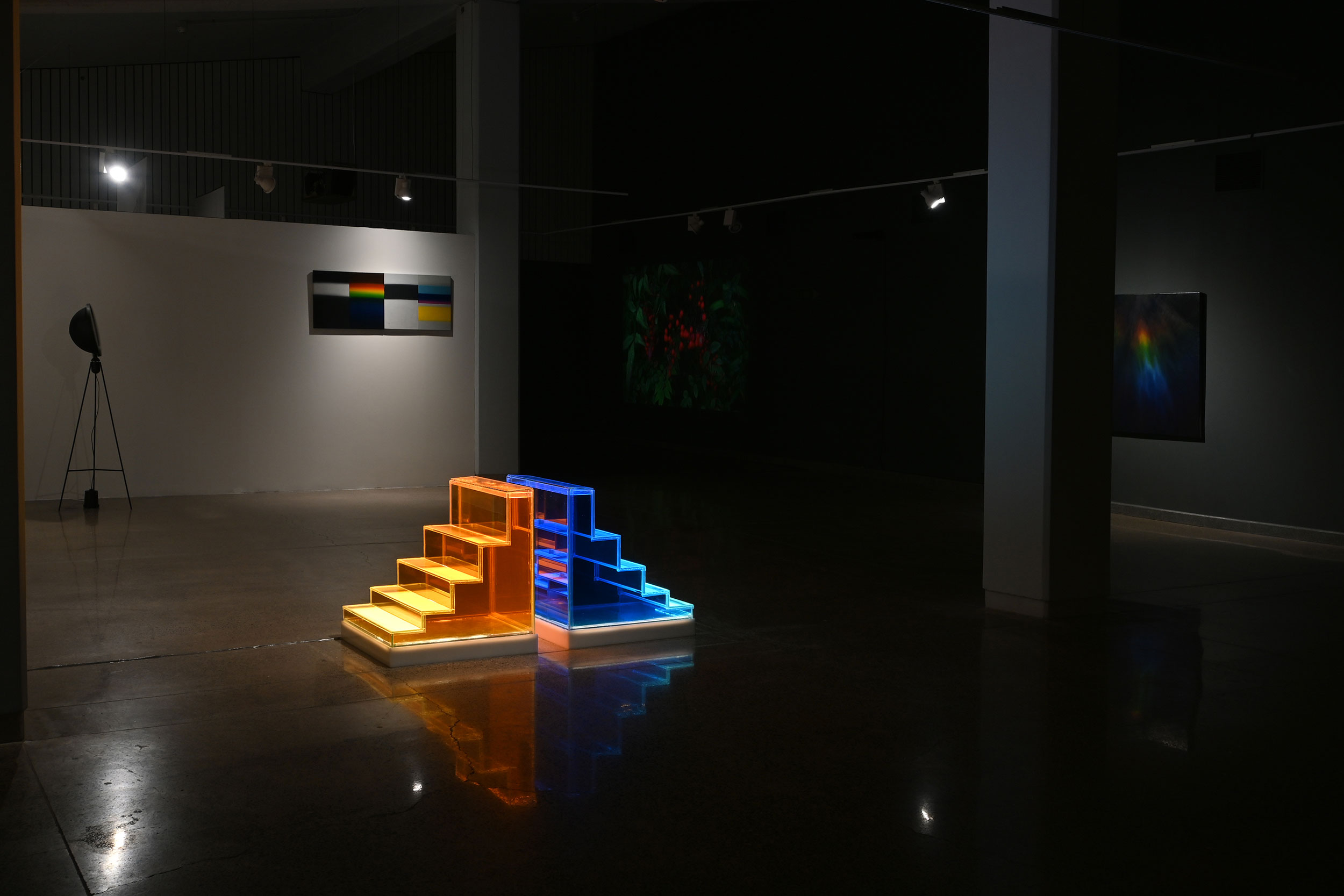

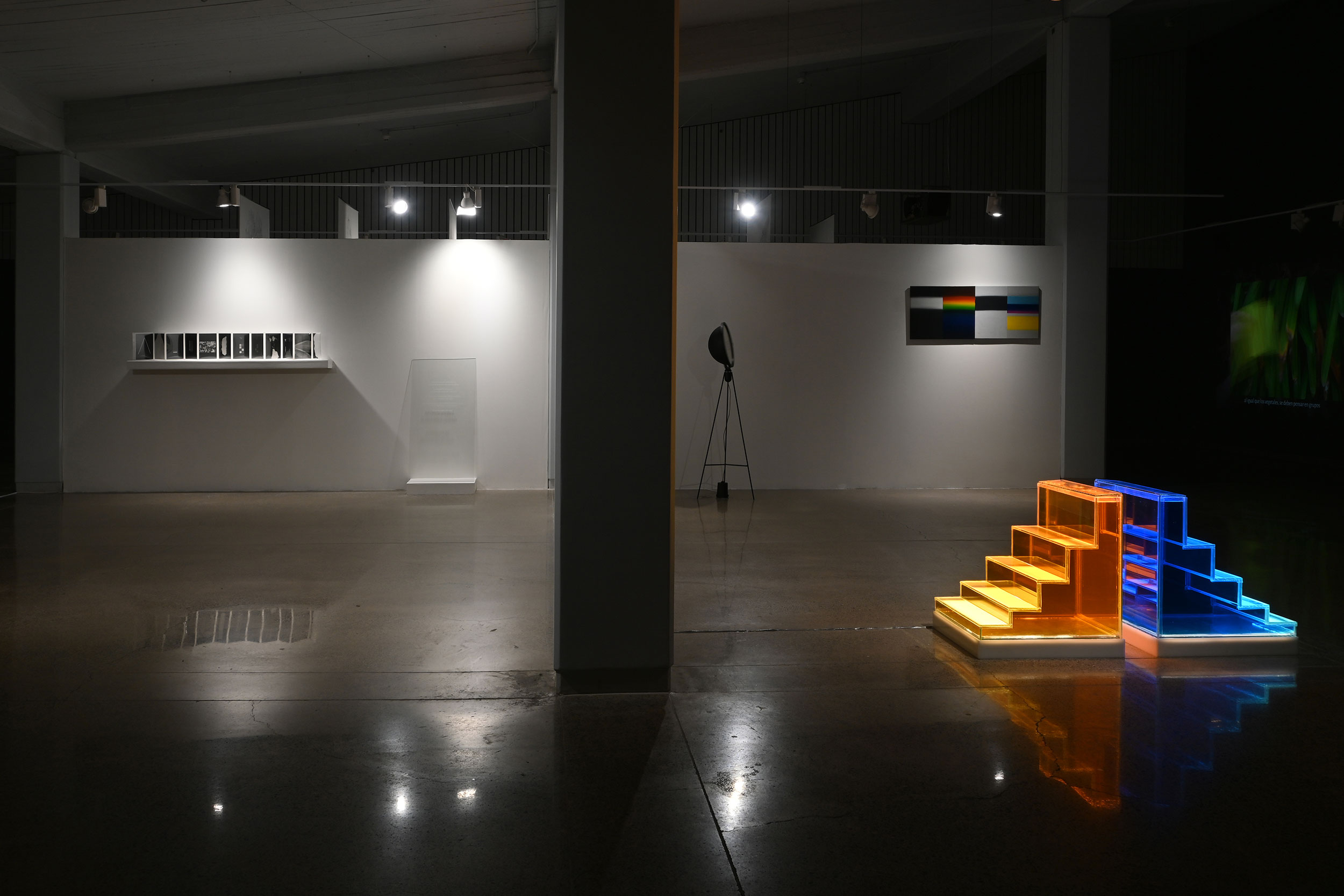
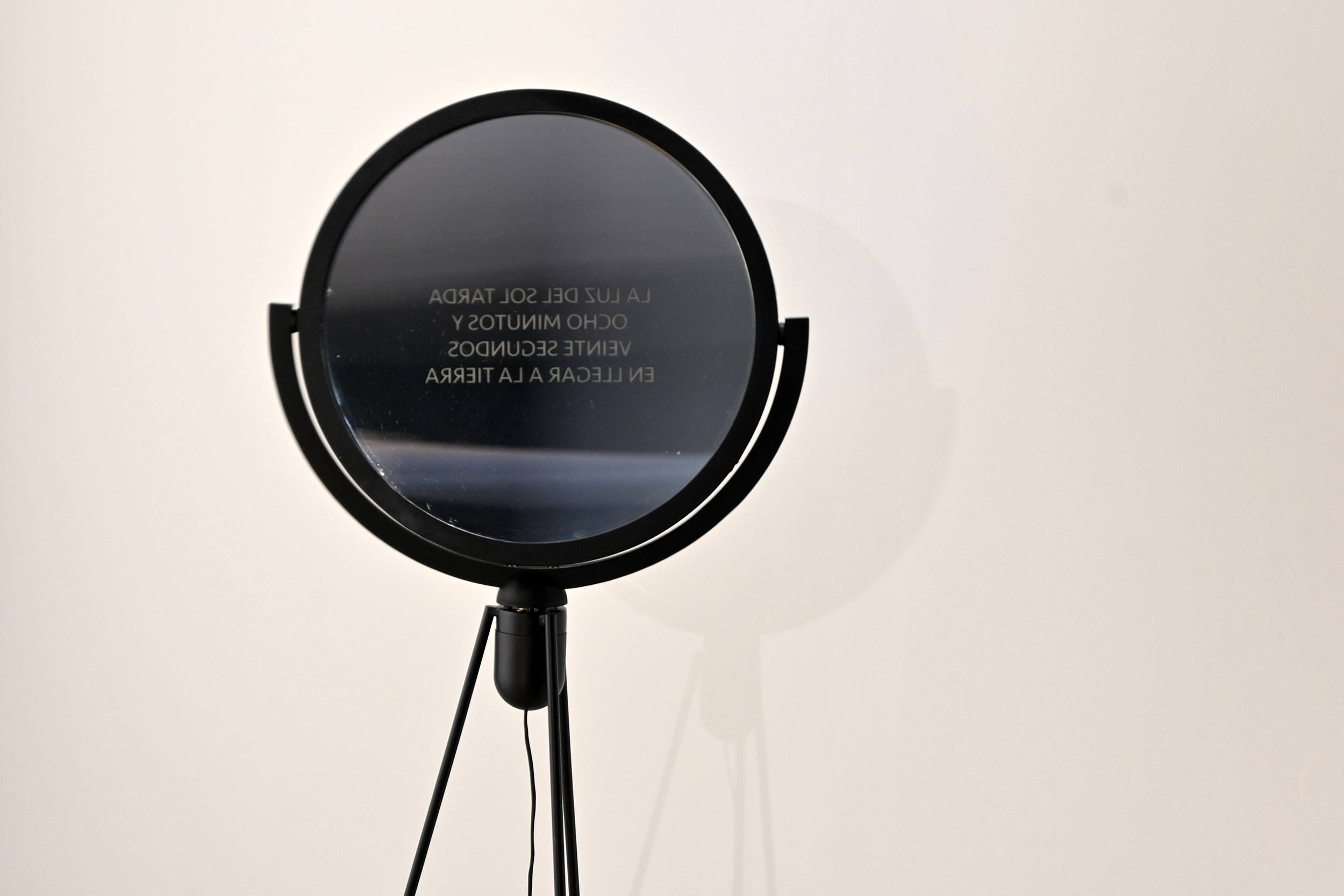
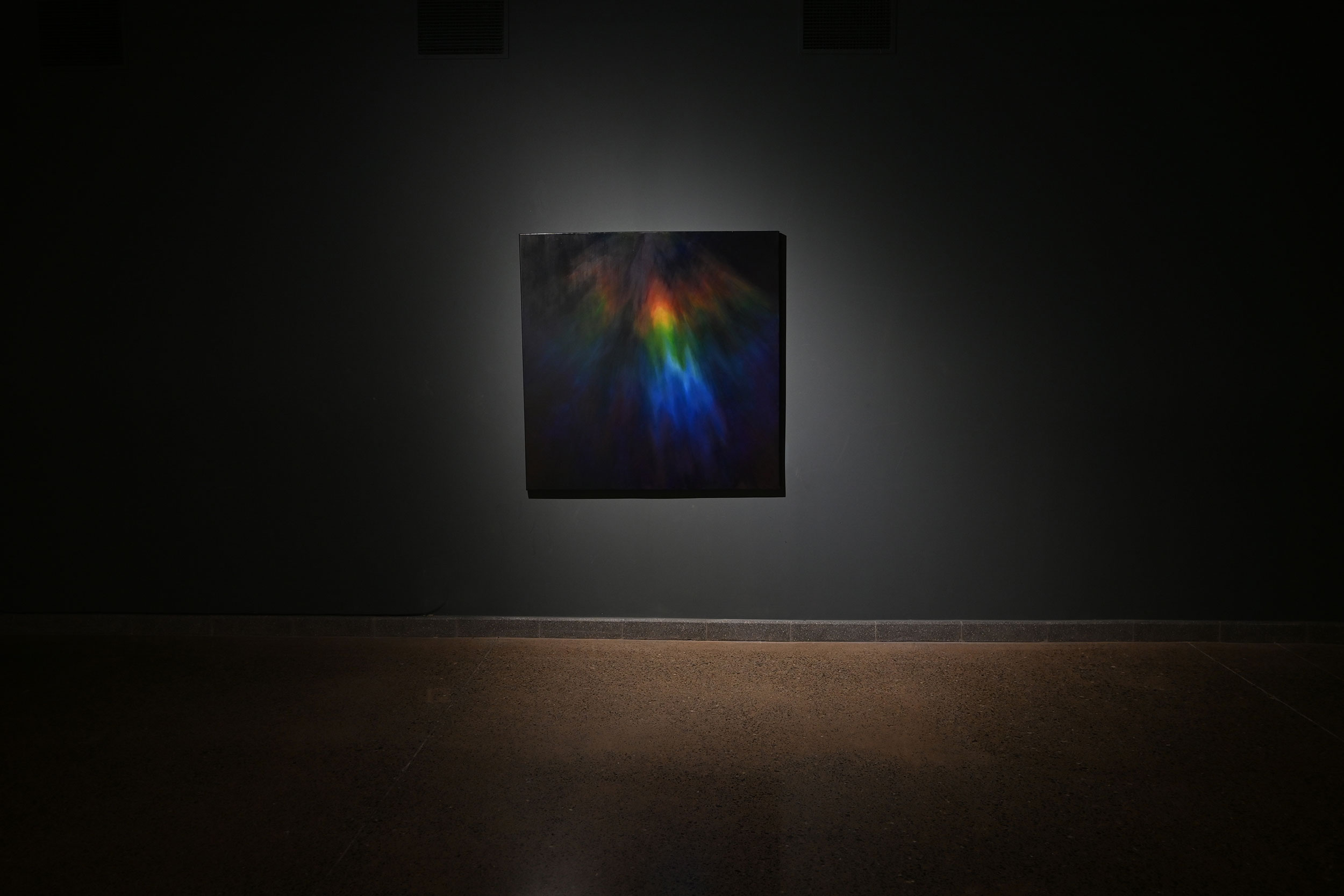



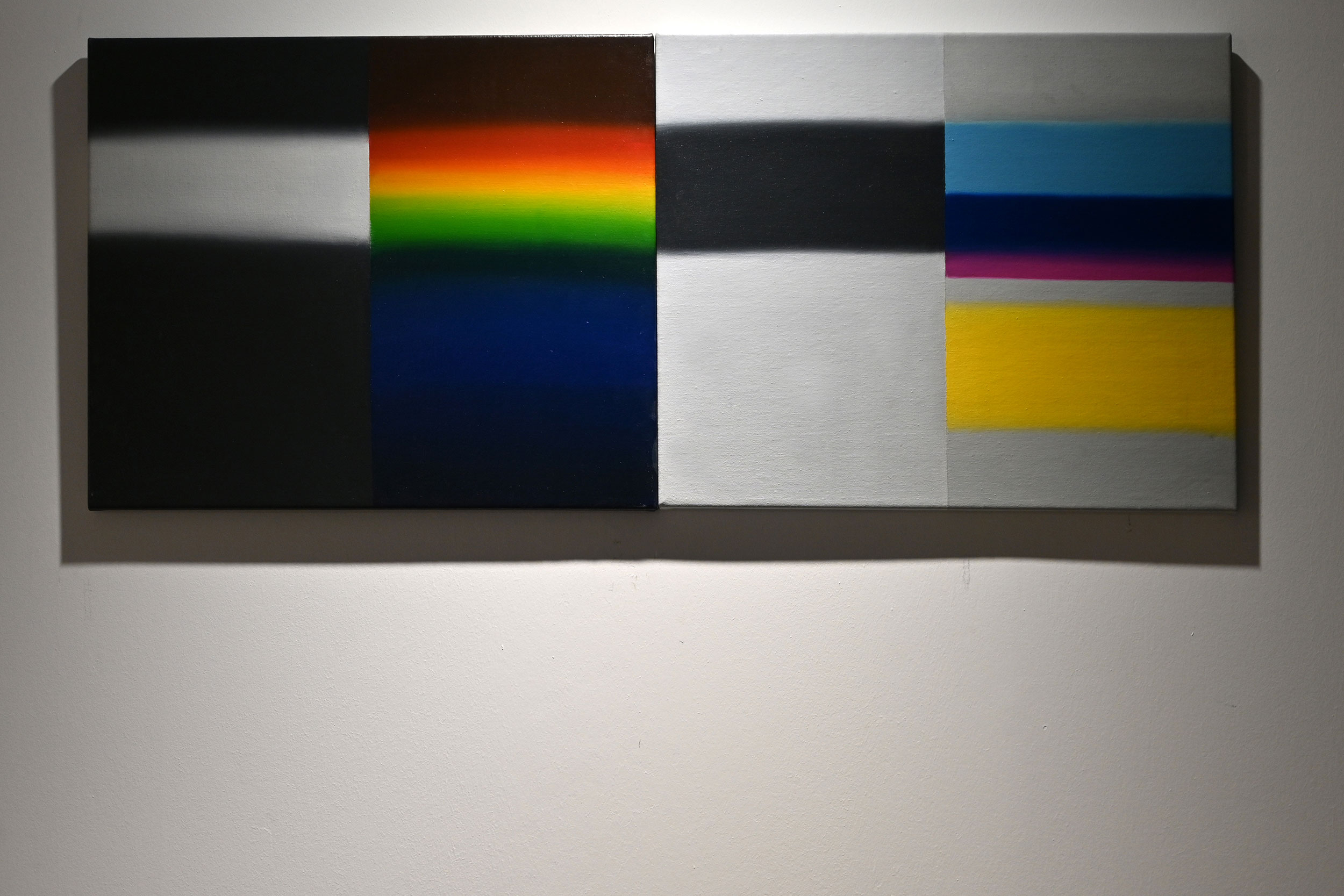
Color Laboratory
CEINA; Centro de extensión del Instituto Nacional
Santiago de Chile.
2023
Color Laboratory investigates color as an experience, a bridge between the internal (visual perception - experience) and the apparently external (landscape, context). In this way, color varies according to the observer, depending on each natural-cultural situation. Color is subjected to a process or laboratory treatment, occupying different media that require measurement and time.
This exhibition-laboratory consists of an invitation to investigate color as a scientific phenomenon, the "color itself" (Newton), as well as its instability considering the experience and perception of the observer (Goethe). The laboratory is displayed in the room as a large map of forms and certain information collected during the last years of experiments. For this, the artist Sofia Nercasseau has taken elements from optics, physics, poetry and etymology. "Color is a connecting element between observing bodies and their environments. This has been a determining factor for the appearance and development of species on Earth," writes the artist.
This laboratory teaches us to look with our hands. Light is associated here with the matter that reflects it. The birth of color from the encounters between light and darkness. The development of this visual sensibility consists for this artist in exploring and contrasting images, materials and theories, all of which can construct a gaze. This research does not necessarily have to do with the production of a specific "work", but with testing a "laboratory of the gaze" that is made available to all.
Nowadays our perception of color has mutated again with the daily interaction on screens with pixels, points of color that in turn are formed by RGB stripes. The digital medium generates new colors because it models subjectivities. The perception of the "user" is different from that of those who work in printing or with material pigments. When we leave the monitor, in a state of hypnosis or daze, we try to recognize the colors of the city or rather, we test the colors of our environment with the visual remora we keep of the RGB stripes.
Colors open up and can tell stories. The exhibition is a journey through different artistic media: photograms, ceramics, words, editorial supports, drawings, video, paintings, sculptural objects. Through them, the artist produces different images.
She experiments with the exposure time of supports to light or heat, with luminous bodies such as monitors and projections, and with post-images, illusionism, spectra and optical effects.The artist also investigated the perception of other animals and insects.
Possibly her own perception has learned from these other ways of seeing.
Color Laboratory approaches a more diverse understanding of color, amplifies the viewing experience and questions preconceived or "scientific" notions about colors.This deployment of multiple media and images proposes to learn/unlearn about colors as an everyday experience and expand awareness of visual perception beyond the human species.
Francisca García